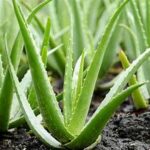**Exploring the Interplay between Flowers and Societal, Economic, and Cultural Factors in Conservation and Utilization**

Flowers hold a unique position in society, intertwining with various social, economic, and cultural aspects that influence their conservation and utilization. Understanding the dynamic interplay between flowers and these factors is crucial for effective conservation efforts and sustainable utilization practices. Let’s delve into the complex relationship between flowers and societal, economic, and cultural influences.
**1. Societal Perspectives and Conservation:**
Flowers are deeply ingrained in societal perspectives, often symbolizing beauty, love, and cultural heritage. Societal values and perceptions influence conservation efforts, with certain flowers garnering greater attention and protection due to their symbolic significance or perceived rarity. Public awareness campaigns and educational initiatives play a vital role in fostering appreciation for floral diversity and promoting conservation efforts, encouraging individuals and communities to actively participate in flower conservation projects.
**2. Economic Dynamics and Utilization:**
Flowers have significant economic implications, contributing to various industries, including floriculture, horticulture, and herbal medicine. Economic factors such as market demand, consumer preferences, and supply chain dynamics influence the utilization of flowers, shaping production practices and trade patterns. The commercialization of flowers drives innovation in cultivation techniques, breeding programs, and product development, leading to the introduction of new varieties and value-added products in the market.
**3. Cultural Significance and Traditions:**
Flowers hold profound cultural significance across different societies, serving as symbols of celebration, mourning, and religious rituals. Cultural traditions and practices influence the cultivation, use, and conservation of specific flower species, with certain flowers being revered or protected due to their cultural importance. Traditional knowledge systems associated with flowers, including indigenous botanical knowledge and herbal remedies, contribute to the preservation of floral biodiversity and the sustainable utilization of plant resources.
**4. Environmental Considerations and Sustainability:**
The conservation and utilization of flowers must be approached with consideration for environmental sustainability and ecological integrity. Sustainable harvesting practices, habitat restoration efforts, and biodiversity conservation measures are essential for maintaining floral diversity and ecosystem resilience. Integrating traditional ecological knowledge with modern conservation strategies can enhance the effectiveness of conservation initiatives, ensuring the long-term viability of floral populations and their associated habitats.
**5. Policy and Governance Frameworks:**
Effective management of floral resources requires robust policy frameworks and governance mechanisms that address societal, economic, and cultural dimensions. Policies related to land use planning, biodiversity conservation, and intellectual property rights play a crucial role in regulating the conservation and utilization of flowers. Collaborative governance approaches involving government agencies, civil society organizations, and local communities are essential for fostering inclusive decision-making processes and implementing sustainable management practices.
**Conclusion:**
In conclusion, the conservation and utilization of flowers are influenced by a complex interplay of societal, economic, and cultural factors. By understanding and addressing these multifaceted influences, stakeholders can develop holistic approaches to flower conservation and sustainable utilization that promote environmental stewardship, economic prosperity, and cultural heritage preservation. Through collaborative efforts and innovative strategies, we can harness the transformative power of flowers to create a more resilient and harmonious relationship between humans and the natural world.


